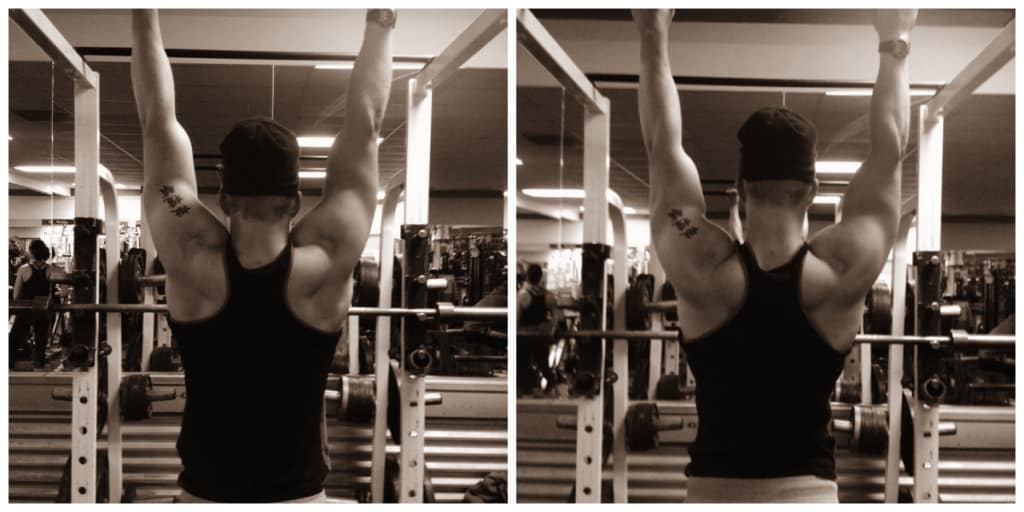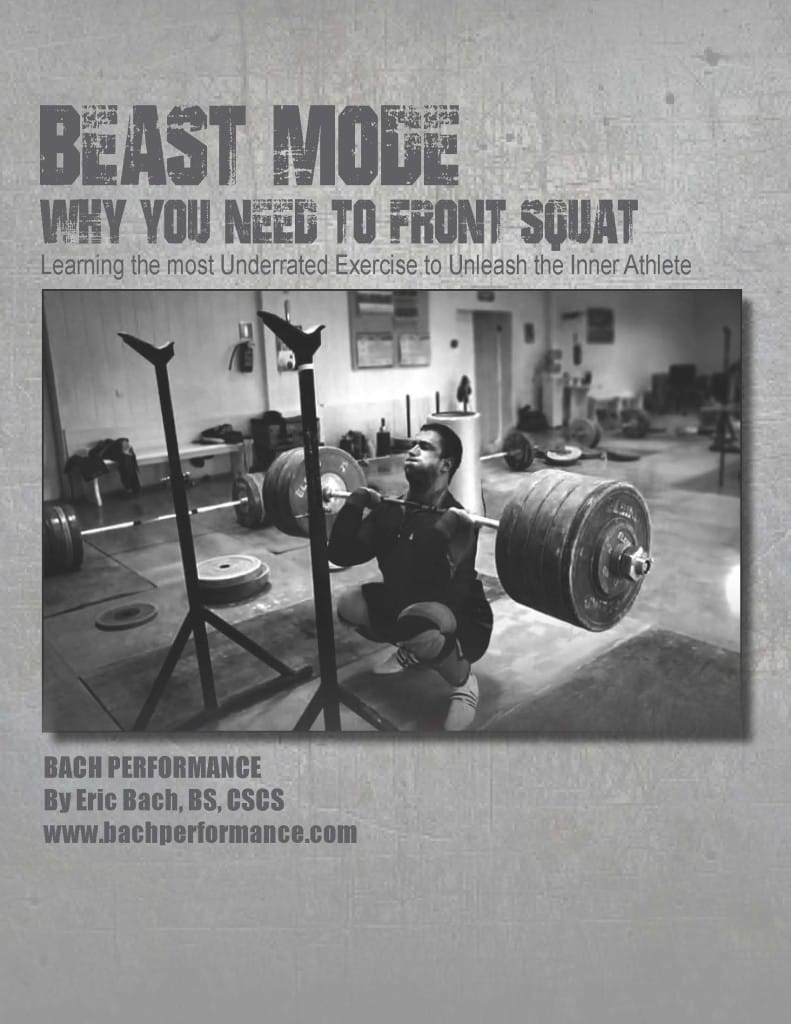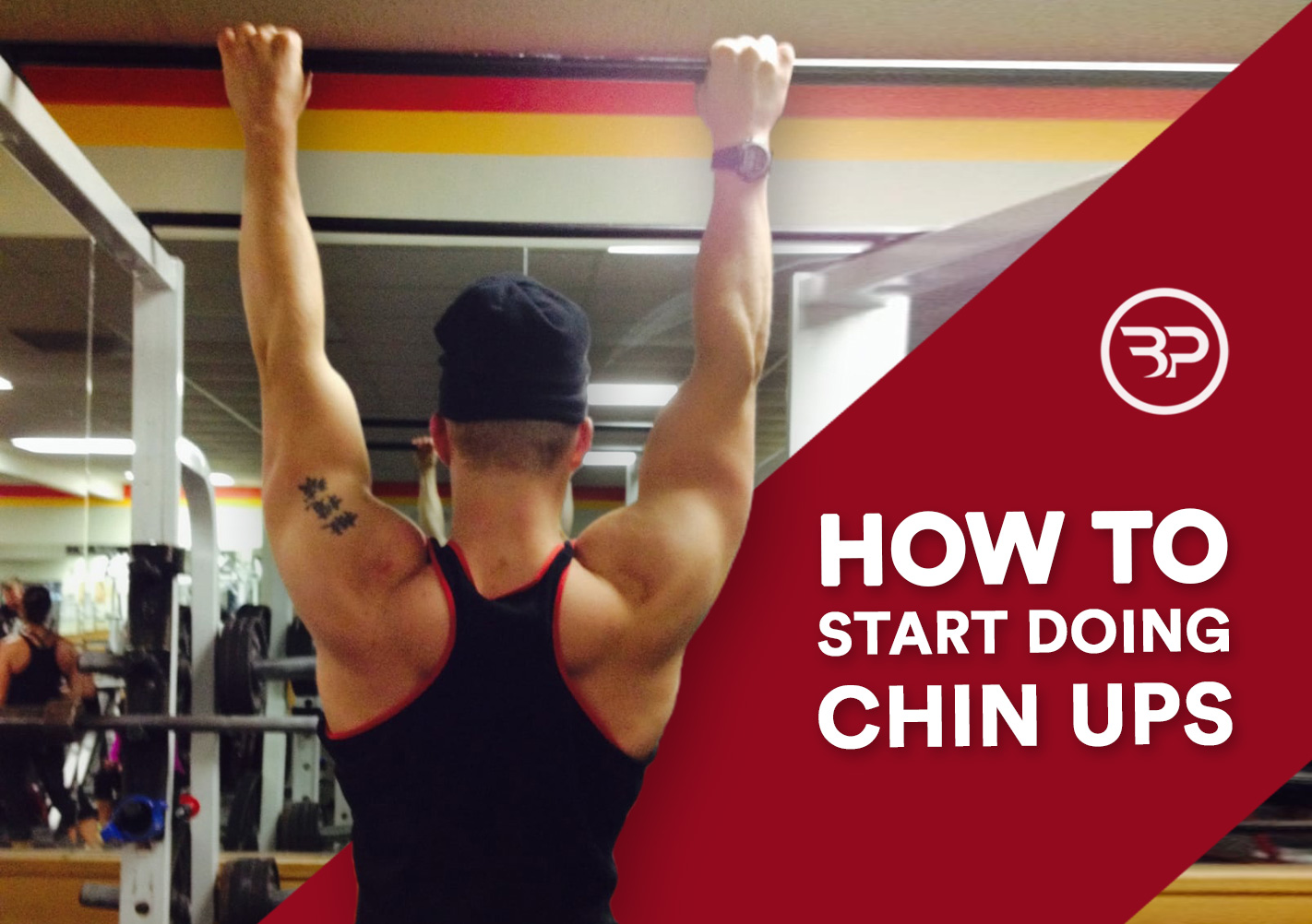How to Start Doing Chin Ups
December 23, 2015
[A Variation of this Article Originally appeared as “How to Master the Chin-Up on AskMen.com]
When you hear the best exercises to build your upper body, what comes to mind?
The bench press?
Rows?
Overhead press?
These are all great exercises, but the ultimate upper body lift is the Chin up.
Why Should Start Doing Chin Ups?
As part of your manly duty to society, you need to be capable of handling yourself in any situation. That means not looking like a goon playing basketball, saving your girlfriend’s kitten that’s stuck in a tree (again), and at worst, defending yourself should you need to.
And while having a huge bench press is great, if you’re incapable of pulling your chest up to a bar, or otherwise moving and controlling your body, what are you getting from your training?
To be your best, you need a high-performance body. Being strong isn’t enough, you should also be strong for your size, and there’s no better exercise to build relative strength than the chin-up.
Chin-Ups Maximize Your Manliness
When you think of your favorite male athlete or action star (dad-bods don’t count) what stands out?
It comes down to symmetry. For men, that means broad shoulders, thick arms, and a V-taper that accentuates a narrow waist, broad shoulders, and muscular legs.
According to my good friend, Fitness Expert and Best Selling Author John Romaniello, this X-shaped physique implies virility and strength, both important factors for attracting the opposite sex and looking awesome. (He put together a full post on the Golden ratio here).
This is where the chin-up reins king; they’re the ultimate “X” building exercise. Further, chin-ups are the best lat exercise in existence and work your traps, rear delts, rhomboids, biceps, forearms and require that you stabilize your pelvis by bracing your abs and squeezing your glutes.
Altogether, chin-ups work a ton of muscles and are the ultimate barometer for having an athletic, muscular body.
How to Start Doing Chin Ups: The Chin-Up Progression:
You’d be hard pressed to find another upper-body exercise that gives you more bang for your buck as the pull-up.
Now comes the hard part: actually doing them.
Because most people, my clients including, spend their days as keyboard punching cubicle dwellers they’re unprepared to perform chin-ups and extend their arms overhead.
There are two drills I use to improve thoracic mobility and stability.
Bench T-Spine Extension Mobilization: 2-3 sets of 8-10 reps Daily
Why: By improving t-spine mobility and targeting the lats, serratus anterior, and traps you’ll improve the shoulders ability to stay in position and transfer force.
How to: Start by kneeling and facing a bench while holding a dowel or PCV pipe in your hands with your elbows on the bench. Holding onto the PVC pipe, rock your hips back, dropping your head until it’s even with your arms and extending through your upper back.
Floor Slide: 2-3 sets of 8-10 reps Daily
Why: The floor slide actives muscles of the mid and upper back, namely the mid-lower trap to fire, helping combat poor posture to improve overhead work.
How to: While supine, keep the lower back flat with the arms extended overhead. Without arching, drive the elbows down towards your sides, squeezing through your mid back. Work to keep the ribcage down through the full range of motion.
Stop your range of motion if you start to arch your lower back, or elevate the rib cage (as seen at end range in the video) gradually increasing your range of motion (ROM) as allowed.
How to Start Doing Chin Ups:
If you’ve never been able to do a chin-up this progression provides a path to success. Losing bodyweight will accelerate your chin-up prowess, especially when coupled with a strength-training plan. To get started, complete each exercise for two weeks with good technique for the sets and reps listed. Then, move onto the next progression to work your way towards chin-ups.
- Inverted Row 5×8: Suspension Trainer or Hanging from a fastened barbell in a power rack.
5×5. Rest 90 seconds and repeat for all five sets.
2.Eccentric Pull-Up: 5×5 Jump to a pull-up bar, take 4 seconds to lower. Rest 90 seconds and repeat for five sets.
- Isometric Pull-Up Hold 4x Time. Jump Up to pull up bar and hold your chest to the bar as long as possible. Each attempt is a full set, rest 90 seconds and repeat for four sets.
- Chin-Up 5×3 Rest 90-120 seconds. Hooray!
Chin-Ups: How to Do your First Chin Ups
1.) Select grip and width. I recommend starting with a neutral (palms facing) shoulder width grip. Depress your scapulae, as if tucking your shoulder blades in your back pocket.
* Note: For clarities sake, I’m referring to all pull-ups, neutral grip pull-ups, and chin-ups under the name chin-up. C’mon man, don’t be that guy.
2.) Hang from the bar with your shoulders squeezed while squeezing the glutes, staying just shy of a fully locked out position.
3.) Pull your chest up to the bar by driving your elbows down, minimizing any swinging of your legs and torso.
5.) lower your body under control, extending the arms to near lockout position.
6.) Maintain tension and keeping your shoulders down and back. Your shoulders should not be up by your ears as in the picture on the left, rather, down like the picture on the right. Repeat for Reps.

Chin-Up Challenges
If you’re already knocking out chin-ups and looking to elevate your game, then these three benchmarks are a great place to begin.
P.S. Already able to do them? Awesome, post a video on Instagram and tag @BachPerformance.
12 Bodyweight Chin-Ups: Twelve chin-ups is an excellent barometer of relative strength for every man. Make it your goal to perform 12 full chin-ups before adding external resistance.
Keep your 1-RM Chin-Up even with your 1-RM Bench Press: Most guys are way stronger in pushing movements like the bench press than pulling movements like rows or chin-ups. Instead of just pushing heavy weights, train the chin-up with heavy weights and lower reps.
The closer you get your chin-ups max (bodyweight + External resistance) to your bench press max, the more balanced your physique and strength.
Anecdotally, having a “pull” that’s as strong as a “push” may prove beneficial in minimizing shoulder imbalances and injuries.
50 Chin-Ups for Time: 50 chin-ups is one heck of a workout. In this challenge, break your sets up however you need, completing 50 chin-ups without breaking form for time. That means no kipping, but you knew that, right?
This is an advanced challenge, but one helluva goal nonetheless.
Set and Rep Guidelines:
- Spend 2-3 days per week foam roll your pecs and lats to improve range of motion. Also, work on thoracic mobility with the rad roller.
- Perform horizontal rows like barbell rows, dumbbells rows, and chest-supported rows more often than chin-ups to improve posture.
- To build strength with the chin up, perform four sets of four to six reps, with 90-120 seconds rest.
- To build muscle mass with the chin-up, perform four to five sets of eight to twelve reps with 60-90 seconds rest.
Chin-Ups are the ultimate test of relative strength for men. Seek chin-up mastery, and your strength and body composition improvements surely will follow.
Do Less, Do it Better, and achieve more.
If you’re looking to maximize sound principles of training, and unleash your inner athlete, then I have a special gift for you.
Join the Bach Performance Community and receive and get the High-Performance Handbook and Ultimate Performance Beginners Guide and loads of free content, gifts, workouts, and information 100% Free.

So, unless you hate wicked awesome training info for free, you get on the list here.









[…] How to Start Doing Chin-Ups – Eric Bach […]